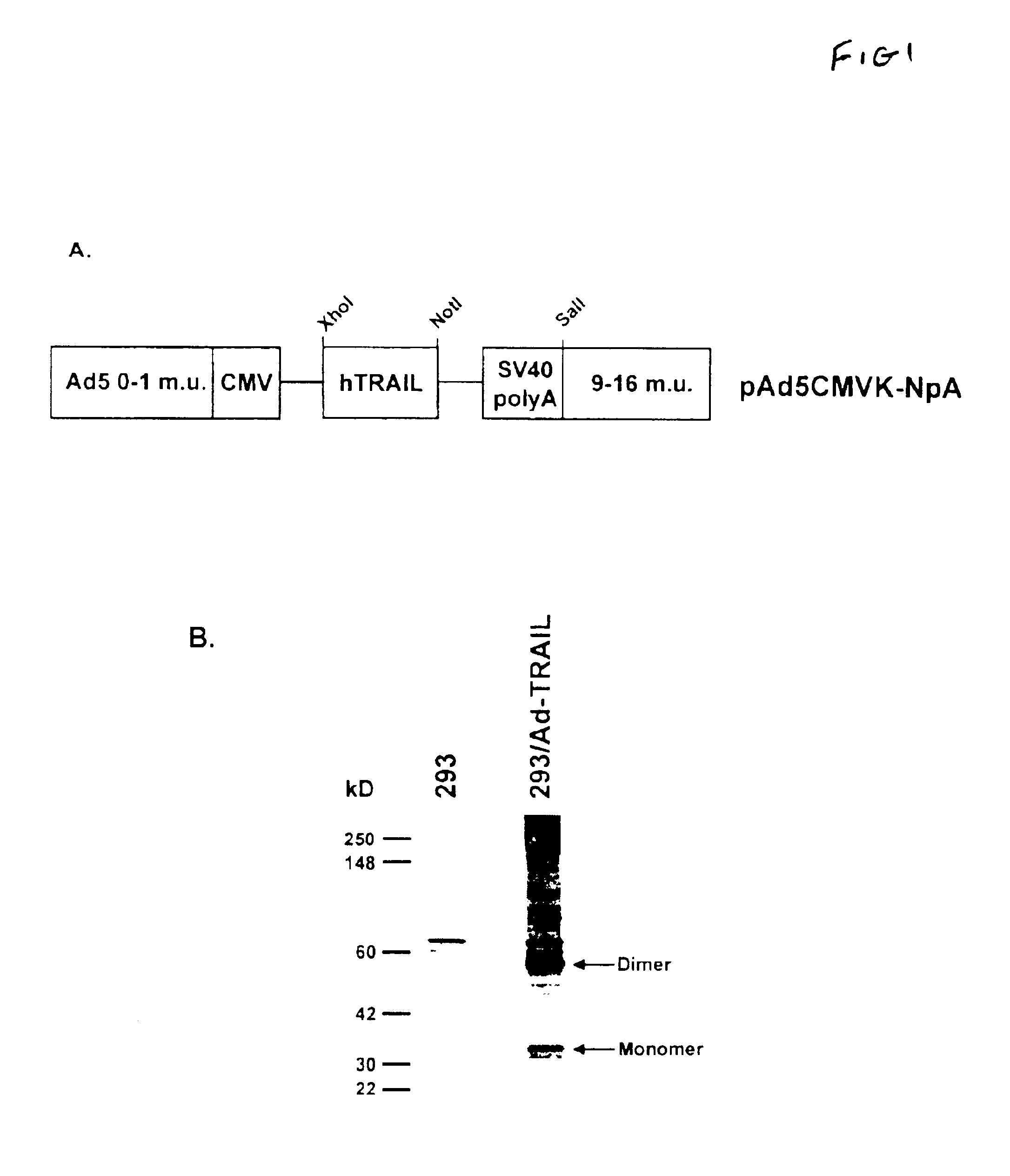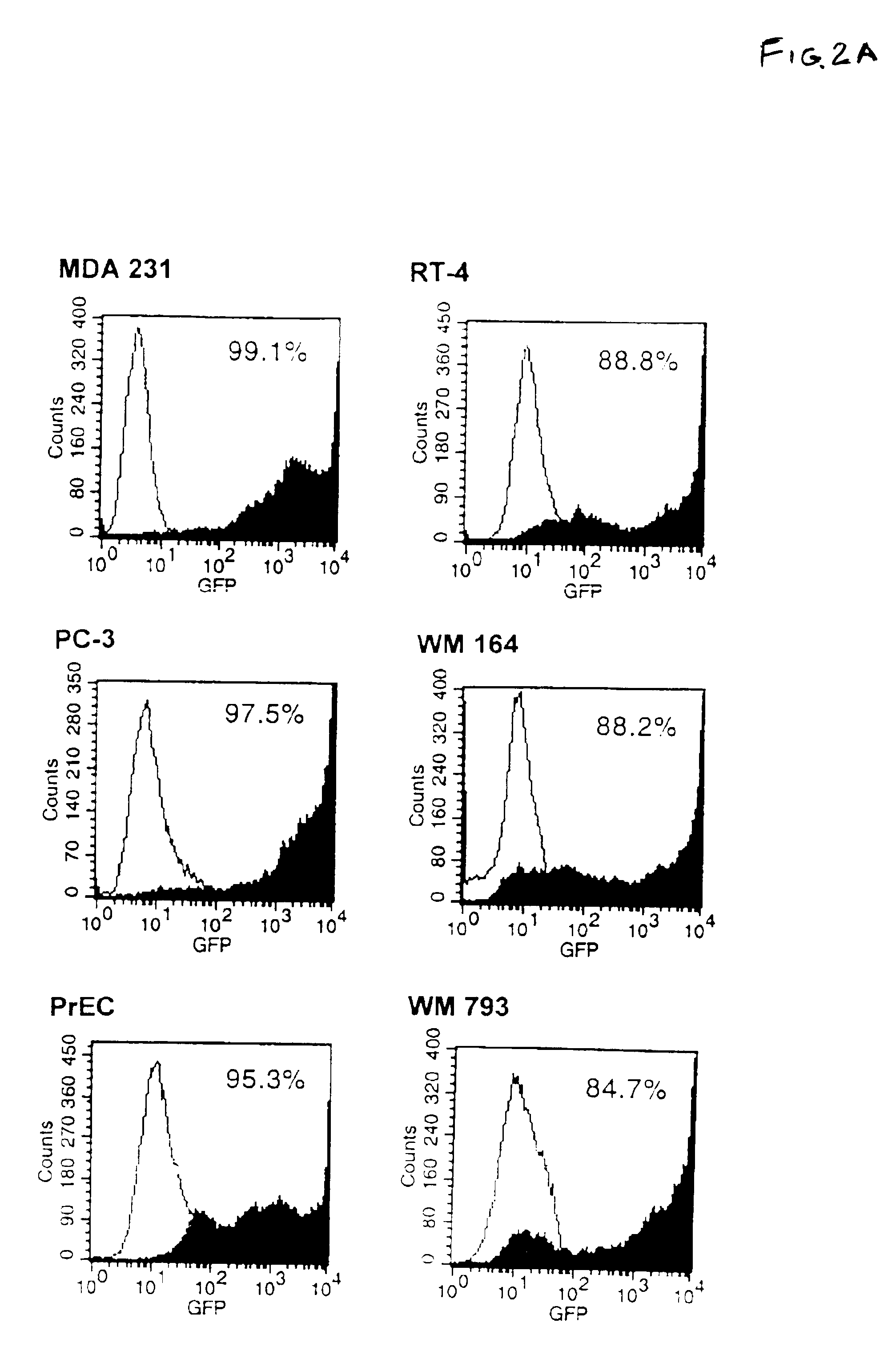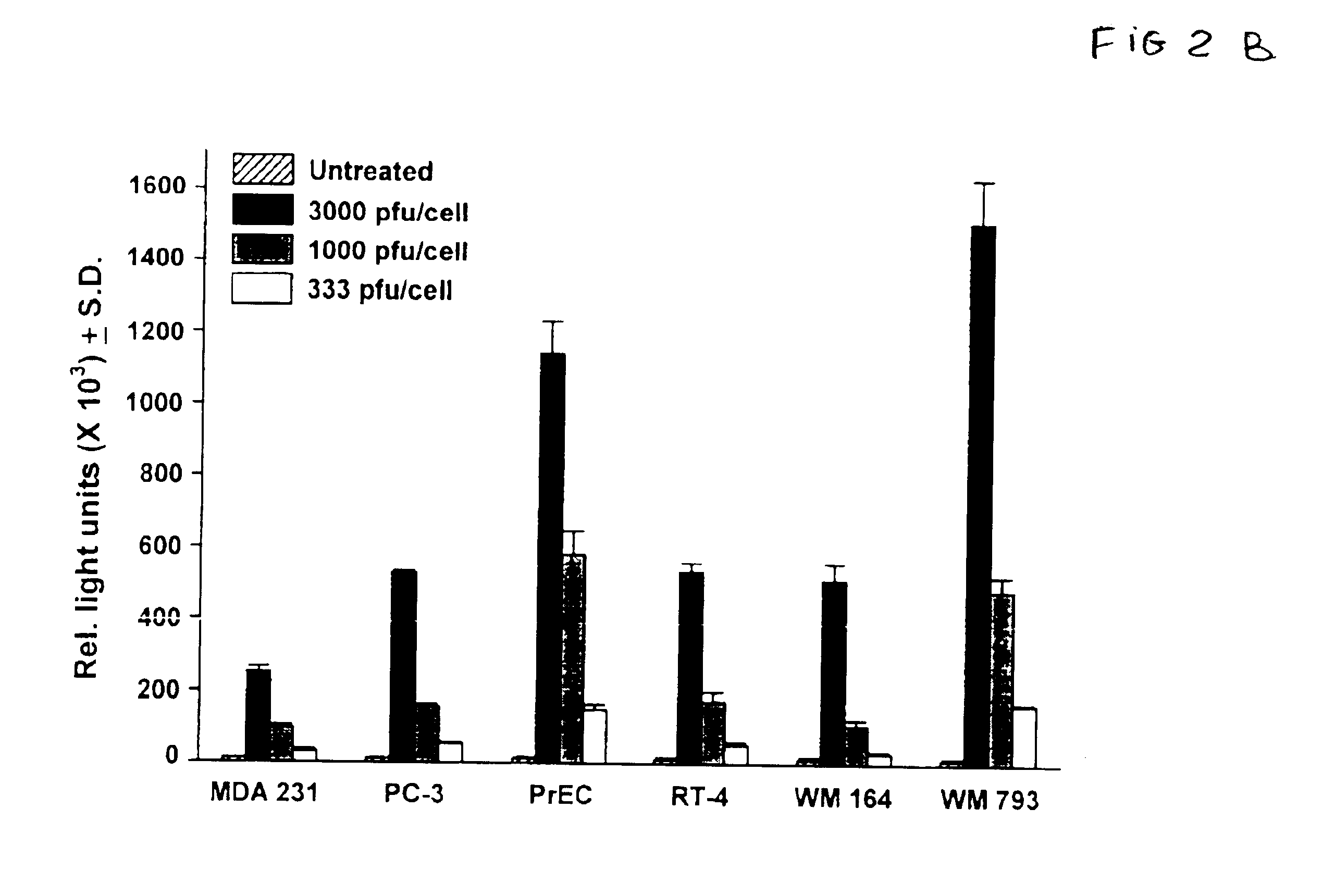Method of inducing tumor cell apoptosis using trail/Apo-2 ligand gene transfer
a tumor cell and apoptosis technology, applied in the field of inducing tumor cell apoptosis using trail/apo2 ligand gene transfer, can solve the problems of tumor progression and death within 3 years, large amounts of soluble trail were required to inhibit tumor formation, and a significant number of patients with advanced prostate cancer failed to demonstrate any initial positive response to androgen ablation therapy, etc., to achieve the effect of inhibiting tumor cell growth
- Summary
- Abstract
- Description
- Claims
- Application Information
AI Technical Summary
Benefits of technology
Problems solved by technology
Method used
Image
Examples
example 1
Production of TRAIL-encoding Adenovirus
[0051]The cDNA encoding human TRAIL (hTRAIL) was inserted into the E1 region of a replication deficient adenovirus type 5 construct under the control of the CMV immediate early promoter (FIG. 1A) to form an Ad-TRAIL vector. The cDNA for hTRAIL was obtained from Dr. Hideo Yagita (Juntendo University, generated using standard methods by the University of Iowa Gene Transfer Vector Core (Iowa City, Iowa) (26). Briefly, the entire coding sequence of human TRAIL was cloned into the XhoI and NotI sites of pAd5CMVK-NpA. The resultant plasmid and adenovirus backbone sequences (adenovirus type 5; Ref. 27) that had the E1 (E1A and E1B) genes deleted were transfected into human embryonic kidney (HEK) 293 cells, and viral particles were isolated and amplified for analysis of TRAIL expression. Recombinant adenoviruses encoding nuclear-targeted bacterial β-galactosidase(Ad5-βgal) or green fluorescent protein (Ad5-GFP) were used as virus controls. Recombinant ...
example 2
Human Tumor Cells are Susceptible to Adenovirus Infection
[0055]One of the advantages of using an adenoviral vector lies in the ability to infect epithelial cell populations. Group C adenovirus, such as Ad5, requires the interaction between the viral fiber capsid protein to the coxsackievirus and adenovirus receptor, or CAR, and the viral penton base binding to certain integrins (e.g. α, β, and α,β,) for entry into the cell by receptor-mediated endocytosis (31-33). Therefore, a panel of human tumor cell lines (MDA 231, mammary adenocarcinoma; PC-3, prostate carcinoma; RT-4, bladder papilloma; WM 164, melanoma; and WM 793, melanoma) were tested to verify that they would be receptive to adenoviral infection prior to examining the effects of Ad5-TRAIL infection. lines (WM 164 and WM 793) were obtained from Dr. Meenhard Herlyn (Wistar Institute, Philadelphia, Pa.). The human mammary adenocarcinoma cell line (MDA 231) was obtained from Dr. David Lynch (Immunex Corporation, Seattle, Wash.)...
example 3
Production of TRAIL Following Ad5-TRAIL Infection Leads to Tumor Cell Death
[0059]With the demonstration that the human tumor cell line panel was adequately infected with adenovirus, subsequent experiments were performed to examine the consequences of Ad5-TRAIL infection. Tumor cell sensitivity to Ad5-βgal, Ad5-GFP, or Ad5-TRAIL was assayed using the following procedure. Cells were added to 96-well plates (2×104 cells / well) in complete medium, and then allowed to adhere for at least 6 hours before infection with the various adenoviral vectors as described above. As a positive control, recombinant soluble hTRAIL was added to the target cells at the indicated concentrations. In some experiments, z-VAD-fmk (20 μM), TRAIL-R2:Fc (20 μg / ml, Immunex), Fas:Fc (20 μg / ml, Pharmingen) or Brefeldin A (5 μg / ml) was added to the medium during and after infection for the remainder of the assay. The peptide caspase inhibitor, z-VAD-fmk was obtained from Enzyme Systems Products (Livermore, Calif.). A...
PUM
| Property | Measurement | Unit |
|---|---|---|
| concentrations | aaaaa | aaaaa |
| concentrations | aaaaa | aaaaa |
| concentrations | aaaaa | aaaaa |
Abstract
Description
Claims
Application Information
 Login to View More
Login to View More - R&D
- Intellectual Property
- Life Sciences
- Materials
- Tech Scout
- Unparalleled Data Quality
- Higher Quality Content
- 60% Fewer Hallucinations
Browse by: Latest US Patents, China's latest patents, Technical Efficacy Thesaurus, Application Domain, Technology Topic, Popular Technical Reports.
© 2025 PatSnap. All rights reserved.Legal|Privacy policy|Modern Slavery Act Transparency Statement|Sitemap|About US| Contact US: help@patsnap.com



